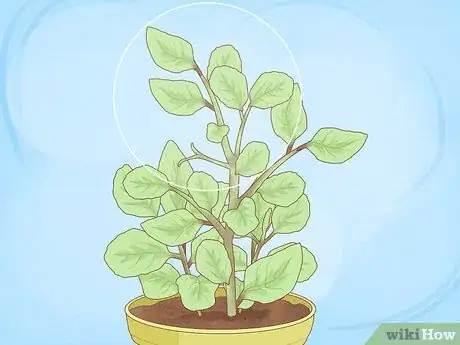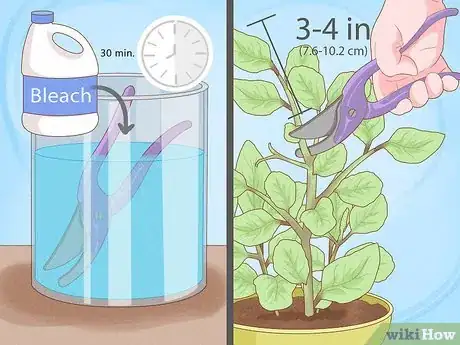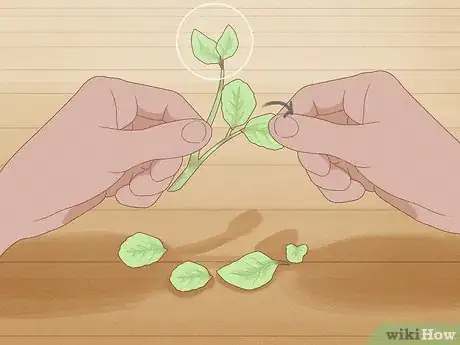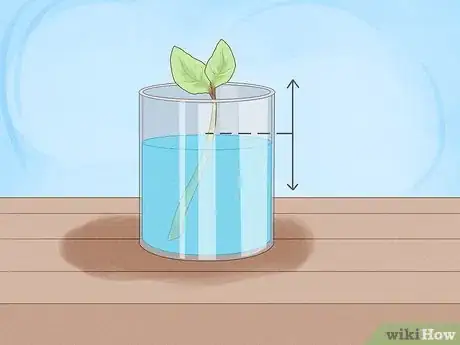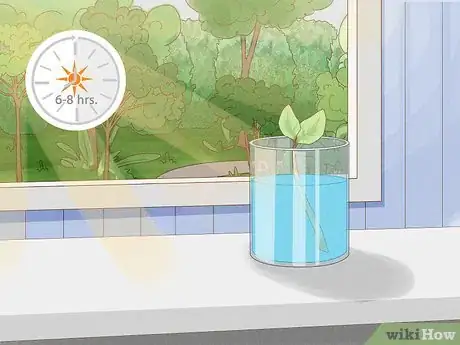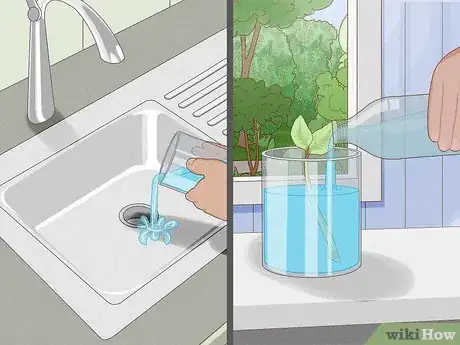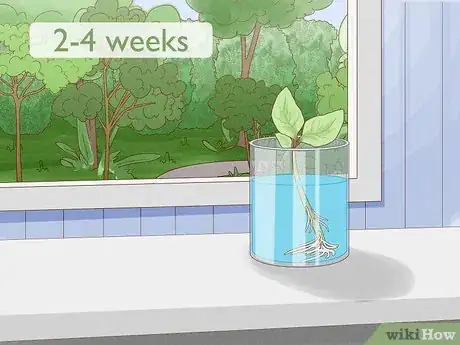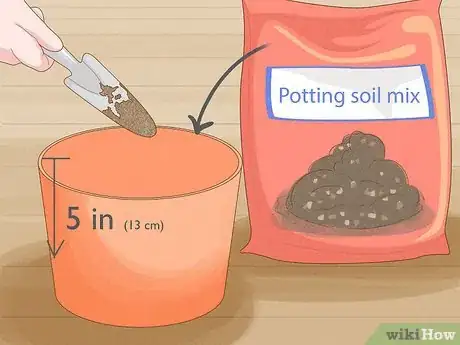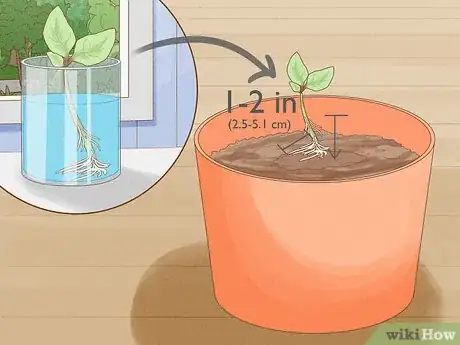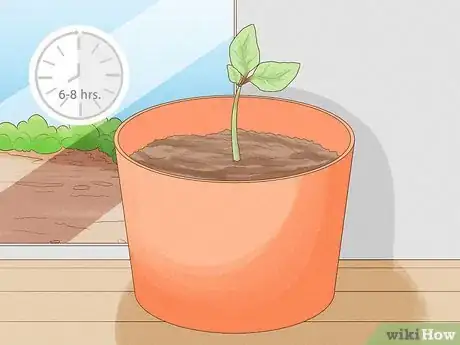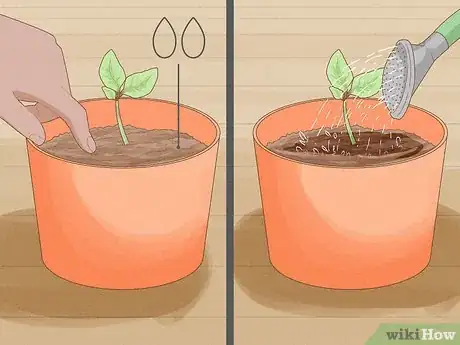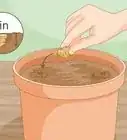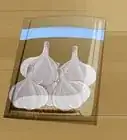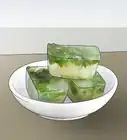This article was co-authored by Artemisia Nursery. Artemisia Nursery is a retail plant nursery in Northeast Los Angeles specializing in California native plants. Artemisia Nursery is a worker-owned small business with plans to become a worker-owned cooperative. In addition to California native plants, Artemisia Nursery offers a selection of succulents, heirloom veggie and herb starts, house plants, pottery, and gardening tools and supplies. Drawing on the knowledge of the founders, Artemisia Nursery also offers consultations, designs, and installations.
There are 10 references cited in this article, which can be found at the bottom of the page.
This article has been viewed 14,760 times.
Growing basil from cuttings is an easy, cheap way to get more basil plants and give yourself an almost endless supply of the herb! As long as you already have a healthy, growing basil plant to cut stems from, you can start growing new basil plants right away. Check out this handy list of tips and tricks for how to grow basil from cuttings.
Steps
Choose a stem that doesn’t have a seed stalk.
-
You want a nice leafy stem to propagate. Look at your basil plant and select a stem that’s at least {convert|3-4|in|cm|abbr=on}} tall and doesn’t have any seed pods or flowers growing from it. Once you find a suitable stem, check to make sure it isn’t starting to grow a seed stalk at the crown as well.[1] X Research source
Cut the stem below the last leaf node.
-
That way, it’s long enough to stick in water. Using a clean pair of scissors, cut the stem and pull it off the plant. Make sure the stem is still 3–4 in (7.6–10.2 cm) long after you cut it.[2] X Research source
- Soak scissors in a 10% solution of bleach diluted with water for 30 minutes to sterilize them before cutting any type of plant. This prevents the spread of pathogens to your plants.
- When you
Pull all but the top 1-2 sets of leaves off.
-
This prepares the stem for propagation. Using just your fingers, carefully pull off all the leaves from the bottom of the stem up, leaving the leaves at the very top of the stem. Set the leaves you picked aside and use them in the kitchen later![3] X Research source
Put the stem in water.
-
The stem will start to root in the water. Fill a clear bottle or jar with water and place the stem in it. Make sure just the stem is submerged and the leaves are not.[4] X Research source
- If any leaves are submerged in water, they will start to rot.
Set the basil in full sun indoors.
-
Basil needs 6-8 hours of sunlight a day to thrive. Find a nice sunny window sill in your kitchen or somewhere else in your home and set the basil there. If you don’t have a window sill, any sunny spot you can find is fine![5] X Research source
- Basil looks nice and smells good, so you could even set it on your dining table or your kitchen counter for some decoration and fragrance.
Change the water every other day.
-
The basil needs fresh water to grow. Every other day, carefully pull the basil stem out of the water and dump it out. Fill up the bottle or jar with fresh water and put the basil back in.[6] X Research source
Wait 2-4 weeks for roots to grow.
-
It can take up to a month for the stem to root. Be patient and don’t worry if you don’t see roots after a couple of weeks! Continue to change the water and keep the basil in a sunny spot until roots form.[7] X Research source
Fill a 5 in (13 cm) deep pot with soil.
-
Once the stem has established roots, it’s time to prepare its new home. Any indoor planter or pot that’s at least 5 in (13 cm) deep will do. Fill the pot with fresh pre-moistened potting soil mix.[8] X Research source
- If you use a shallower pot, the basil won’t have enough room to really thrive.
- Make sure whatever container you use has holes in the bottom so water can drain out.
Plant the basil when the roots are 1–2 in (2.5–5.1 cm) long.
-
This ensures they’re sturdy enough to pot. Push a little hole into the center of the pot with your finger. Remove the basil stem from the water and place the roots into the hole, then carefully pack the soil on top of the roots and around the stem.[9] X Research source
Place your potted basil out of direct sunlight.
-
That way, it doesn’t get sunburned. Anywhere inside that receives about 6-8 hours of bright, indirect or filtered sunlight is great. You could put the basil back in the same windowsill you propagated it in, for example.[10] X Research source
- Basically you just don’t want to put the basil outside yet because that’s where it’s most likely going to receive direct sunlight that can damage it.
Water the basil when its soil is dry to the touch.
-
This prevents overwatering. Stick your finger into the soil when it looks dry to make sure there is no moisture remaining below the surface. Water the basil around its base until the soil is wet, trying not to get water on its leaves.[11] X Research source
- If your basil develops yellow, droopy leaves, it may be a sign that you’re overwatering.
Plant the basil in a garden after 1-2 weeks if you want.
-
The plant will be established after 1-2 weeks. If you aren’t sure whether it’s established yet, gently tug on it to see if it feels anchored in the soil. If it is, it’s safe to transplant the young basil to an outdoor garden if desired. However, it’s totally fine to leave the basil in the pot indoors as long as you want![12] X Research source
- You can pick leaves off the basil whenever you want to use some fresh basil in the kitchen. In fact, regularly picking off some leaves encourages healthy new growth! Just be sure to pick leaves from the top of the plant—that will help the plant grow bushier, rather than long and lanky.[13]
X
Expert Source

Plant Nursery & Garden Shop Expert Interview. 7 August 2020.
- You can pick leaves off the basil whenever you want to use some fresh basil in the kitchen. In fact, regularly picking off some leaves encourages healthy new growth! Just be sure to pick leaves from the top of the plant—that will help the plant grow bushier, rather than long and lanky.[13]
X
Expert Source
You Might Also Like
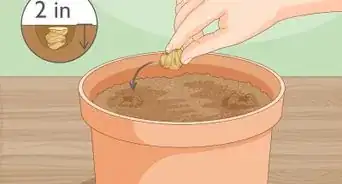 How to Plant, Care For, and Harvest Ginger at Home
How to Plant, Care For, and Harvest Ginger at Home
 How to Plant, Grow, & Harvest Your Own Garlic at Home
How to Plant, Grow, & Harvest Your Own Garlic at Home

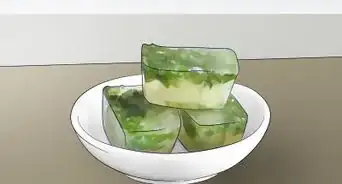


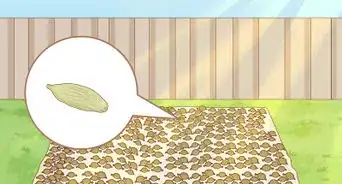



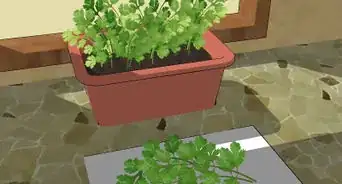
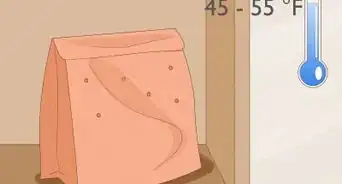

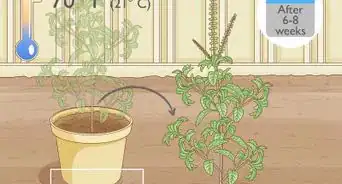
References
- ↑ https://www.youtube.com/watch?v=Rg1336sO4Uc&t=20s
- ↑ https://gardenerspath.com/plants/herbs/propagate-basil/
- ↑ https://www.youtube.com/watch?v=Rg1336sO4Uc&t=29s
- ↑ https://www.finegardening.com/article/how-to-grow-basil
- ↑ http://sonomamg.ucanr.edu/Vegetable_of_the_Month/Basil/
- ↑ https://gardenerspath.com/plants/herbs/propagate-basil/
- ↑ https://gardenerspath.com/plants/herbs/propagate-basil/
- ↑ https://gardenerspath.com/plants/herbs/propagate-basil/
- ↑ https://savvygardening.com/growing-basil-from-cuttings/
- ↑ https://www.youtube.com/watch?v=TkIM1rCjSqI&t=276s
- ↑ https://www.thekitchn.com/everything-you-need-to-know-about-growing-basil-221272
- ↑ https://www.youtube.com/watch?v=TkIM1rCjSqI&t=291s
- ↑ Artemisia Nursery. Plant Nursery & Garden Shop. Expert Interview. 7 August 2020.
About This Article

